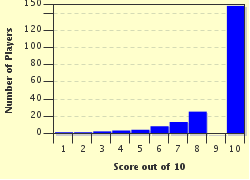Quiz Answer Key and Fun Facts
1. Tooth decay
2. Inflammation of dental pulp tissue
3. Collection of pus that spreads from the tooth to surrounding tissues
4. Teeth that cannot emerge properly from the gum
5. Inflammation of the gums
6. Bad breath, also called fetor oris
7. Excessive teeth grinding or jaw clenching
8. Dryness in the mouth
9. Condition where the upper teeth severely overlap the bottom jaw and teeth
10. Inflammation of the mouth and lips
Source: Author
ponycargirl
This quiz was reviewed by FunTrivia editor
rossian before going online.
Any errors found in FunTrivia content are routinely corrected through our feedback system.

